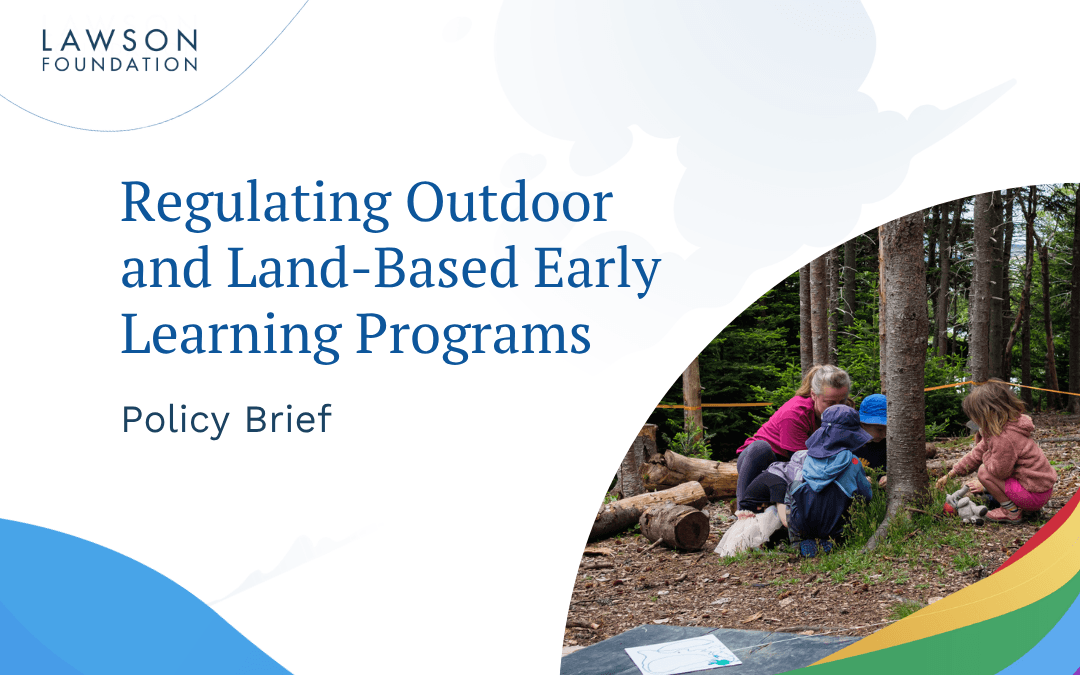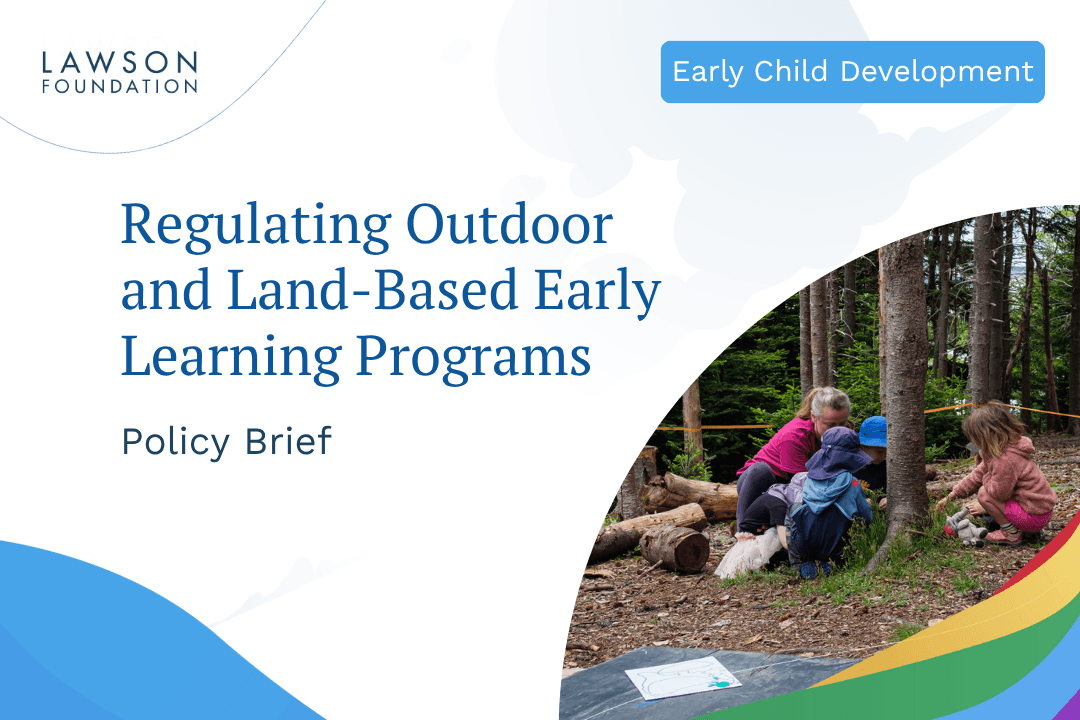Across Canada, there are now hundreds of specialty early years programs that focus their programming on the outdoors in all seasons and all weather. A variety of approaches guide these programs, including Forest and Nature Schools and Indigenous land-based ways of knowing, being, and doing.
However, these programs are not included in provincial/territorial child care legislation because existing regulations require operators to have a facility or building. Further, existing regulations do not address the unique needs of outdoor and land-based programs (OLBs). It’s a square peg, round hole problem.
A new policy brief from the Lawson Foundation is grounded in experience and evidence from leading practitioners, policymakers, and researchers in Canada and abroad. The policy brief explains the unique features of OLBs and provides a conceptual framework for developing a new category of regulations and licensing for OLBs. Why? Simply put, distinct programs need distinct regulations. For OLBs, we need to move to licensing the program, not the facility.
What are OLBs?
An OLB is a model of early learning and child care that
- operates primarily outdoors/on the land for most of the scheduled day, in an unfenced natural space, in all weather and all seasons (except for during extreme weather); and
- is delivered by specially trained and qualified staff, guided by a philosophy of outdoor and land-based learning, and aligned with the provincial/territorial early learning framework.
To ensure safety and quality, OLBs operate with high educator-to-child ratios and safety standards, adapt health and hygiene practices to the outdoors, and maintain access to shelter for periodic use.
Why should OLBs be regulated?
OLBs support healthy child development by
- enhancing opportunities for physical, social, emotional, and cognitive development by providing space to move, self-regulate, take risks, and facilitate access to nature;
- enabling unique experiences that spark curiosity and support relationships with nature; and
- fostering relationships with the land and engagement with local First Nations, Inuit, and Métis Peoples and ways of knowing, being, and doing, supporting Truth and Reconciliation.
With all these benefits, OLB regulation becomes a compelling matter of equity and inclusion under the Canada-Wide Early Learning and Child Care (CWELCC) expansion.
Currently, unlicensed programs are expensive and can only operate part-time, failing to meet the needs of working parents and reach all families regardless of economic status. Only regulation can make OLBs accessible at $10/day under the CWELCC plan and ensure benefits for children from diverse socioeconomic backgrounds, those with special needs, and those without easy access to nature.
The evaluation of Canada’s first OLB demonstration project in St. John’s, NL, illuminated a pathway to regulation. In addition, there are international precedents to study in the USA and Europe. It’s time to develop Canadian standards and regulations to support OLBs in each jurisdiction in Canada.
As governments at all levels continue to build the CWELCC system, we should pause to reflect on the types of spaces being created. The benefits of OLB learning are clear, and children and families need high-quality, affordable, and inclusive OLB options in their community.


